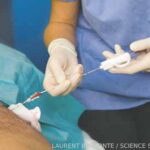But at the end of day, we don’t need to demonstrate that a urine biomarker could replace a renal biopsy because the value of a repeat renal biopsy at one year is to capture whether or not there’s residual activity, which predicts outcomes. If we have a urine test that does the same thing, you don’t need them to exactly match.
TR: How will a liquid biopsy affect the care of our patients with SLE?
Dr. Fava: I’d like to break this down into five categories:
- Diagnosis: The liquid biopsy could aid in the initial diagnosis of lupus nephritis by expediting aspects, especially in resource-poor areas (but also in resource-rich areas) where it can take many weeks to arrange a renal biopsy;
- Monitoring: Urine biomarkers could allow us to assess early treatment response to enable early treatment changes, if necessary;
- Tapering of immunosuppression: Urine biomarkers could have the potential to help guide tapering. We are studying this, but don’t yet have data;
- Prognosis: A liquid biopsy could identify those at risk of losing renal function more accurately than UPCR can; and
- Screening: We have additional new data that the liquid biopsy could be a useful screening tool [Note: presented at ACR Convergence 2025], and if we can capture lupus nephritis way before injury, we’ll have a much smaller fire to put out. These data could really shift the management strategy from treatment to prevention.6
TR: How soon do you think a liquid biopsy will be commercially available for patients with SLE?
Dr. Fava: I think it’ll take some time. We hope to have an assay available for clinical trials by the end of 2026. As for availability and affordability on the commercial scale, we’re hoping to see this within two to three years. A lot depends on the regulatory process and payer approvals. Things are a bit unpredictable, depending on how they view the data we present.
TR: What is standing in the way of rheumatologists placing a liquid biopsy order for our patients?
Dr. Fava: First, we need to develop a robust assay, meaning an assay we can trust. For example, if you leave urine outside the fridge for an extra hour, the assay won’t be totally invalid. We want it to be reproducible and trustworthy.
Next, we need validation of the liquid biopsy in larger cohorts, and getting larger cohorts isn’t trivial. We want to ensure the assay applies to all patients, not just patients with lupus nephritis in Baltimore, [who make up the majority of the Hopkins Lupus Cohort].



